How to breed chamotte clay?
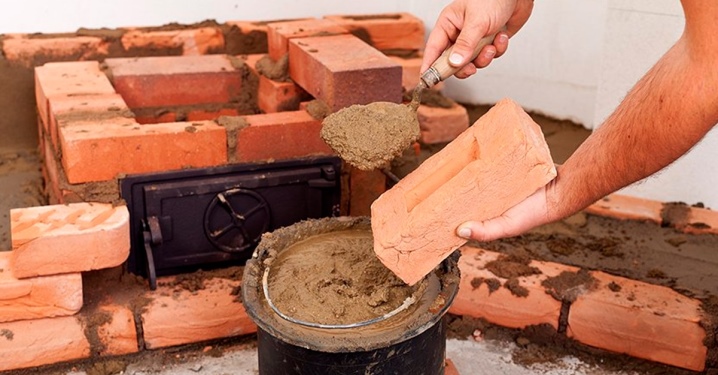
Mortars of the fastening type in the construction industry are used different, one of the most popular is concrete. However, the scope of its application is small due to the perception of external factors: high humidity, temperature drops. Chamotte clay is much more versatile. Among its main advantages are fire resistance and environmental friendliness, therefore the scope of application is much wider than that of other bonding solutions. With the help of chamotte, you can create materials that are resistant to high temperatures, plasters, including those of a decorative type, and mixtures for modeling.

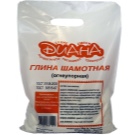
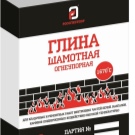

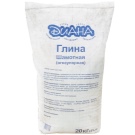
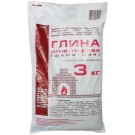
How to dilute clay for laying a stove?
It is possible to properly dilute fireclay clay, observing the proportions of fireclay sand and other components. It is impossible to use only sand, since the plasticity of the composition will be very low. Mixing sand for masonry and putty is necessary with the addition clay, kaolin... The proportions of sand and clay should be kept 2 to 1, sand and kaolin - 4 to 1.

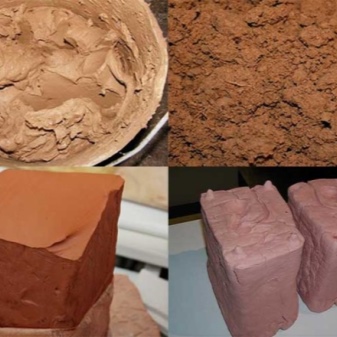
Both compositions have a right to exist, and working with them is not particularly different. Do not forget that you cannot use ordinary sand in this case, since it increases in size when heated and gradually destroys the masonry. Another component that is combined with chamotte is Portland cement... This is acceptable if the maximum refractoriness of the future masonry is not required.
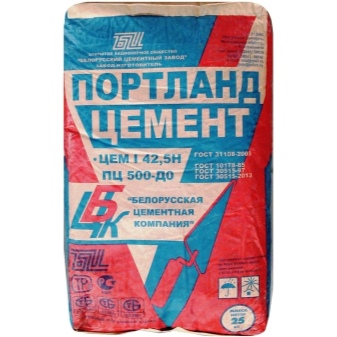
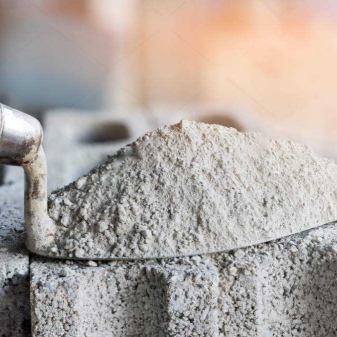
Cooking steps
First you need to prepare the solution, not forgetting that after 2 days it will become solid and unsuitable for use. Accordingly, you need to prepare as much mixture as you plan to use today or tomorrow. Kaolin sand can be bought in bags (as well as chamotte sand). Consumption for 100 bricks is about 66-67 kg of fireclay sand.
The process includes the following steps:
- chamotte and kaolin in the indicated proportions are combined in a container;
- water is gradually introduced into the mixture with constant stirring;
- the ratio of water and sand of both types is approximate; it is determined when administered in portions;
- after creating the solution, it is left for three days to absorb moisture and achieve the required consistency;
- then the density and quality of the mixture are checked and adjusted in the right direction - either water or sand is added;
- after the surface is processed using a construction mesh and a spatula;
- the composition is applied not too dense and in a large layer, otherwise the heat removal will be slow, the bricks will heat up worse, the temperature drop will lead to cracks, the optimal layer is 2-3 cm.
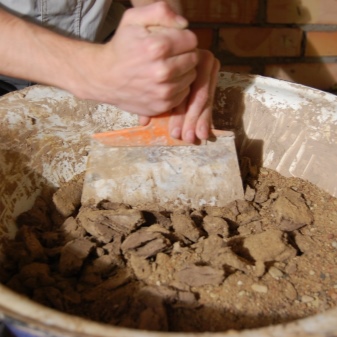

Possible problems
Fireclay composition for masonry has practically no negative reviews from builders, it is difficult to imagine a more reliable solution for stoves. This material is very durable, lasts a long time, while the reliability is not reduced. It is environmentally friendly, safe and does not deteriorate from external influences of temperature and moisture. At the same time, adhesion is at the highest level.
However, all these advantages do not exclude the presence of some disadvantages that should be taken into account:
- the cost of the fireclay composition is quite high, the production of this material is associated with technical difficulties;
- the dust of the composition is very fine and can damage the respiratory system if you do not use protective equipment;
- the solution cannot be stored for a long time, you need to carefully calculate how much of the composition you need on a particular day;
- it can be difficult to achieve the necessary consistency even for a professional: after three days of swelling, the composition may turn out to be completely different from what is needed, this is affected by the level of humidity, temperature;
- in order to achieve the ideal consistency of thickened sour cream without lumps, you need to take your time, introduce water in small portions, control the amount of components and the resulting composition, so that it does not go to waste and is really of high quality.
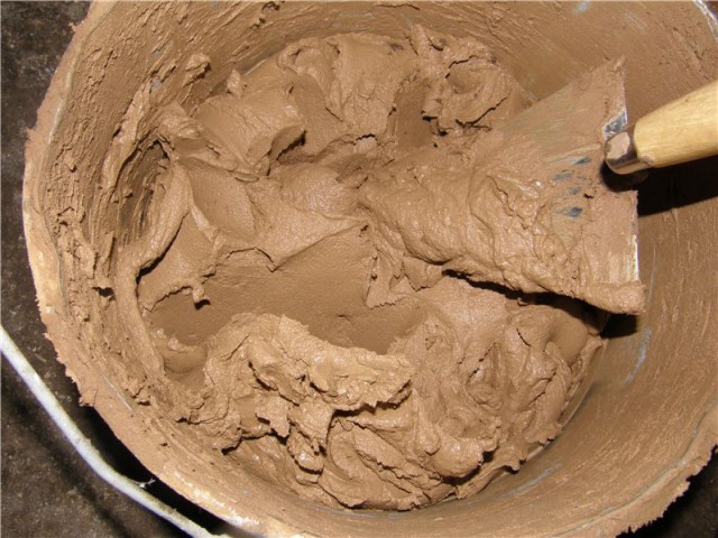
How to mix plaster mortar?
Refractory mortar for masonry is not the only thing that can be done with your own hands at home from fireclay sand. It can be used to prepare decorative or intermediate type plaster. This composition is indispensable for the repair of any premises, if prepared correctly. Refractory plaster will increase the degree of reliability of the stove masonry if it is worked on the surface of the stove.
This solution is perfect for all repair work, the purpose of which is a completely flat wall.
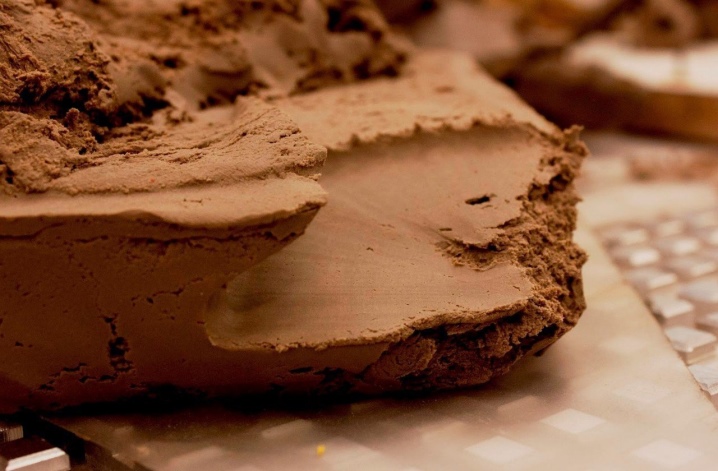
The components for preparing a plastering solution are as follows:
- fireclay type sand;
- quarry sand;
- Portland cement;
- salt.
The optimal proportional composition: for 1 part of Portland cement, 2 parts of chamotte sand and 7 parts of quarry sand are taken. Also, the quality of the solution is increased by the addition of salt - for 4 liters of putty, 50 grams of salt will be needed.

Let's list the main recommendations for use.
- It is very important not to rush, add a little water in order to achieve a truly optimal composition and not to redo it. The correct mixture should not be too light and resemble pancake dough. This error is corrected by introducing an additional amount of proportional mixture without water.
- The ideal consistency of fireclay plaster resembles thick (but not excessively!) Sour cream. In fact, it is similar to a masonry mixture, but more malleable, easier to work with, plastic.
- To work with plaster, you need trowels that are not the same length and size. In addition, prepare a serpyanka, that is, a mesh tape, which will make the seams stronger and help increase the adhesion of the composition and the surface.
- In no case do not apply the composition in a thick layer and tightly, otherwise this will affect the rate of heat dissipation and may disrupt the quality of work.
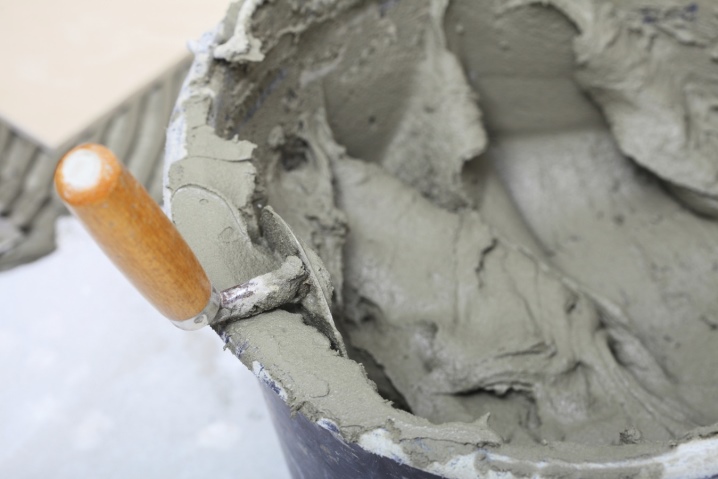
How to cook for sculpting?
Fireclay type plaster is perfect for creating interior items. Modern design makes it possible to use them as details of an artistic composition. Fireclay plaster is perfect for leveling any irregularities and self-styling of any surfaces. Chamotte clay is used to create:
- pots;
- sculptures;
- dishes;
- frames for the interior;
- other decorative items.
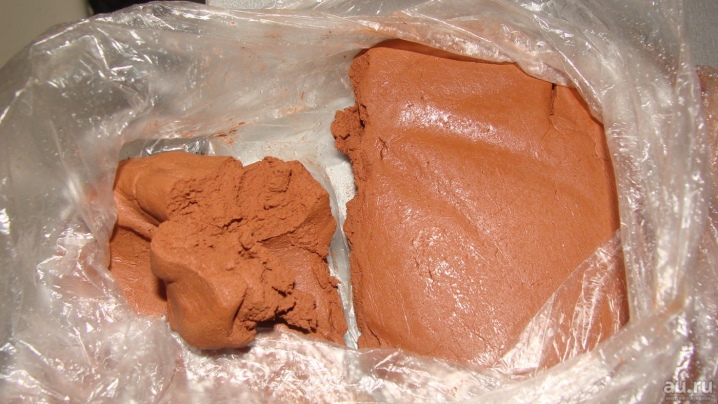
To make the clay suitable for hand sculpting, the following are added to it:
- water;
- plasticizers;
- moisture retention reagents.
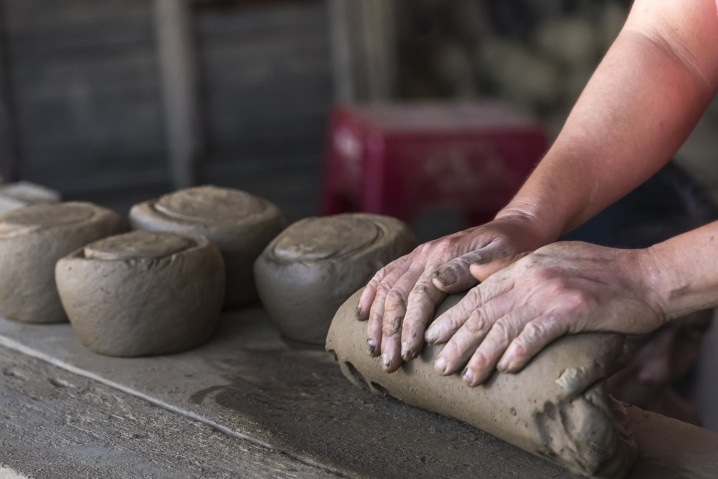
In this case, it is realistic to create any of the above items that are fired at high temperatures. Since it is the high temperature that affects the color and strength of the product, it is important to use a composition that is not afraid of fire. In special stores you can buy chamotte-type masses that are introduced into clay. This additive will provide the mass with heat resistance and high plasticity. The composition is perfect for creating objects of large shapes, it is quite comfortable to work with it.
Chamotte for modeling can be presented in different variations of fractions. Pottery is excellently obtained from small chamotte, but large ones are categorically not suitable for this. A large type of crumb is suitable for the formation of massive products, street decoration.

The recipe for making mass for modeling is as follows:
- clay is sieved, gets rid of any extraneous inclusions, soaked and dried;
- dry clay is crushed under a tarpaulin and sieved;
- you can pass the clay through a large meat grinder, but in this case, sifting does not occur, only grinding;
- clay must be defended in water, removing all unnecessary from the surface;
- in this way, the clay is soaked several times, removed from one container and placed in another;
- after that, another drying;
- fireclay sand is added last, it is introduced in quantities that depend on the purpose of use;
- for the manufacture of ceramic decorative items, the ratio of chamotte and clay should be 50 to 50, this mass is called chamotte, the minimum amount of chamotte is 1 to 5.
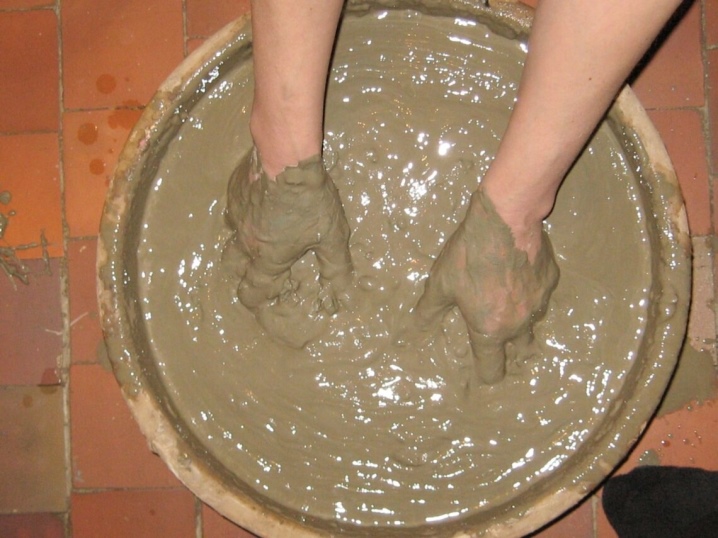
How long does chamotte dry?
On the stove, according to experts, there can be a huge amount of liquid, it is contained in the bonding compounds. Almost all seams of any design are sealed with a solution in which there is water. Therefore, it is so important that the chamotte composition is completely dry and becomes a high reliability thermal system. To achieve this, it is not enough to wait - you need to heat the stove slowly, not until the heat, using a small amount of fuel. This will allow the water to gradually evaporate.
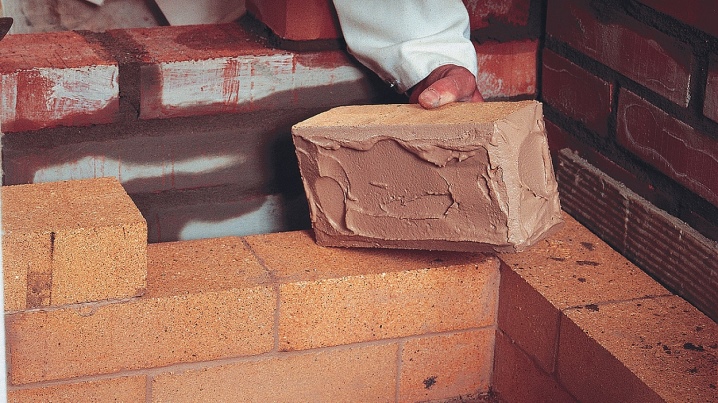
It is very important not to forget about the outside temperature. If it is below -10 degrees, then the moisture will evaporate longer.
The outside temperature should be between 18 and 20 degrees. The stove is heated at least 2 times a day, ideally with wood, but no more than 4 logs per firebox. This mode should be maintained from 1 to 1.5 weeks in the summer, the time varies depending on the thickness of the masonry and the dimensions of the stove. In winter, the drying time increases to 14-20 days.
For more information on how to prepare a solution from chamotte clay, see the next video.













The comment was sent successfully.